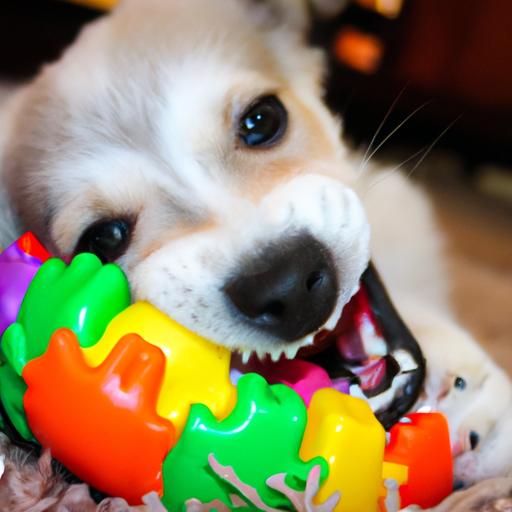Understanding Dog Teething
As a caregiver, you may have noticed your one-year-old dog starting to chew on everything in sight. Whether it’s your favorite pair of shoes, the corner of your couch, or even their own toys, it may seem like nothing is safe. This behavior is likely a sign of teething, a natural process that all dogs go through much like human children.
Dog teething is the process by which a puppy’s milk teeth fall out and are replaced by adult teeth. This usually begins when your dog is around 3-4 months old and continues until they are about 6-7 months old. However, some dogs may experience late teething, which can extend into their first year.
Signs of Teething in Dogs
While every dog is different, there are a few common signs of teething you can look out for:
- Excessive Chewing – All dogs chew, but teething pups will gnaw on anything and everything they can get their paws on.
- Drooling – Teething can cause your dog to drool more than usual.
- Missing Teeth – You might notice gaps where your dog’s baby teeth used to be.
- Bleeding Gums – This can be a sign of new teeth pushing through the gums.
How to Help a Teething Dog
So, how can you help your furry friend during this uncomfortable time? Here are some tips:
- Chew Toys – Provide a range of safe chew toys that can relieve some of the discomfort of teething.
- Cold Chews – Cold items can help soothe aching gums. Consider freezing a wet washcloth for your dog to chew on.
- Puppy-Safe Pain Relief – Consult your vet for recommendations on safe pain relief options for your teething puppy.
Potential Issues with Late Teething
While late teething is generally not a cause for concern, it can sometimes lead to dental issues. Some potential problems might include:
- Overcrowding – If the baby teeth don’t fall out in time, the adult teeth can come in at odd angles, leading to overcrowding.
- Infections – Overcrowding and misaligned teeth can make it harder for your dog to keep their mouth clean, leading to potential infections.
How to Prevent Dental Issues in Dogs
To prevent these and other dental issues, make sure you’re doing the following:
- Regular Vet Check-ups – Regular check-ups will allow your vet to monitor your dog’s dental health and catch any potential issues early.
- Daily Brushing – Brushing your dog’s teeth every day will help keep their teeth and gums healthy.
When to Seek Veterinary Help
If your dog seems excessively uncomfortable, is refusing to eat, or you notice any signs of infection (such as bad breath, red or swollen gums, or discharge), it’s time to seek veterinary help.
Common Misconceptions About Dog Teething
It’s important to dispel a few common misconceptions about dog teething:
- “Dogs lose all their baby teeth at once.” In reality, dog teething is a gradual process that occurs over several months.
- “Teething causes fever in dogs.” While teething can cause discomfort, it should not cause a fever. If your dog has a fever, they are likely sick and should see a vet.
Frequently Asked Questions About Dog Teething
Q: What age do dogs finish teething?
A: Most dogs finish teething by the time they’re about 6-7 months old. However, some dogs may continue to lose their baby teeth and grow in their adult teeth up to a year old.
Q: How long does the teething process last?
A: The teething process usually lasts for about 3-4 months, from the time your dog starts losing their baby teeth to when their adult teeth are fully grown in.
Q: How can I tell if my dog is teething or if there’s a more serious problem?
A: If your dog’s behavior changes significantly, they stop eating, or they seem to be in pain, it’s a good idea to consult your vet. These could be signs of a more serious problem that needs medical attention.
Q: What should I do if my dog’s baby teeth don’t seem to be falling out?
A: If your dog’s baby teeth don’t seem to be falling out on schedule, it’s a good idea to consult your vet. They can check for any potential issues and may recommend extraction if necessary.



